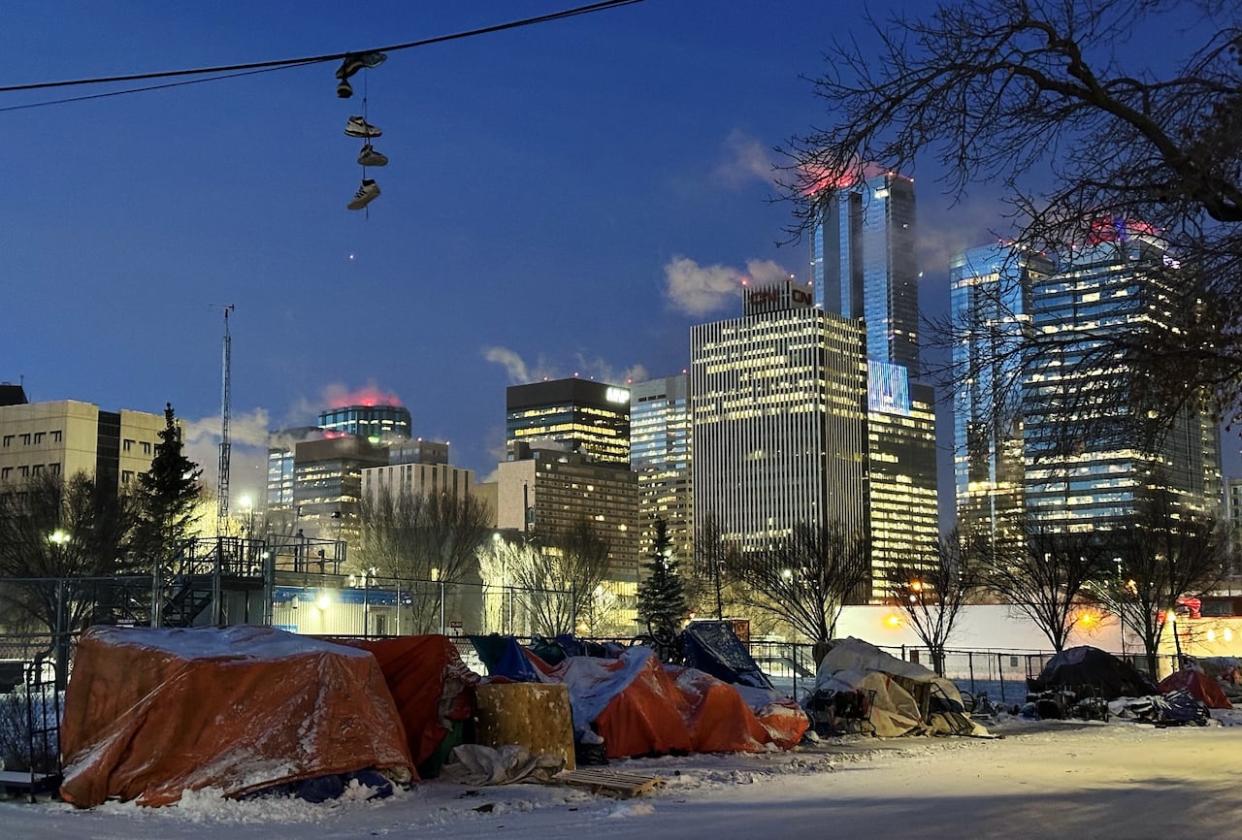Most frostbite amputation hospital visits in Edmonton last year were for homeless patients

Edmonton's unhoused population is disproportionately affected by amputations due to frostbite, accounting for more than half of such visits last fiscal year according to data collected by Alberta Health Services.
The data was obtained through a freedom of information request filed by Chris Wiebe, a lawyer representing the Coalition for Justice and Human Rights, who provided CBC News with a copy.
"It's important to quantify the impacts of houselessness and, we believe, in part the impacts of encampment evictions on the houseless community," says Wiebe.
The figures count the total number of health care visits where frostbite was diagnosed, and where there was an amputation performed along with a frostbite diagnosis. The data also separately breaks out those same categories of visits where the patient was recorded as being homeless.
The data shows that 58 per cent of frostbite amputation visits during the last fiscal year, involved homeless patients. That figure was an increase from 39 per cent the previous year. The fiscal year for the data runs from April to March. This means each year of data includes one full winter season.
Data could be undercounted, doctor says
Edmonton's homeless population was estimated at around 3,000 individuals during 2023 — about 0.3 per cent of the city's total population.
Sandy Dong, an emergency physician who has practised in Alberta for two decades, says the only surprise in the numbers is that the percentage of homeless patients isn't higher.
He says that may be a result of data entry error.
"Sometimes the chart may be inaccurate. Sometimes there's an address that's old," says Dong. "If anything, I think the number of homeless individuals represented here might be an undercount."
Last year, CBC News reported on data that showed a dramatic spike in frostbite amputations during the fiscal year of 2021-2022.
One of the differences between that data and these new figures, according to AHS, is how amputations are counted.
While the earlier data counted the number of times a computer code for amputation was entered, this new data reflects the number of visits where amputation was performed.
Because a patient might have multiple amputations during a single visit, the number of digits or limbs lost is not indicated in the new data. Similarly, because one patient might have multiple visits, the figures aren't necessarily an exact proxy for the number of individual people.
Kerry Williamson, a spokesperson for AHS, said in an email that the difference is simply due to how the data team chose to interpret each request.
A battle over homelessness
The housing crisis has made headlines in Edmonton in recent weeks, with literal and metaphorical battles from encampments to the courthouse to city hall.
Coalition for Justice and Human Rights, the advocacy group represented by Wiebe, sought to use the courts to prevent the city and Edmonton Police Service from dismantling encampments.
The group had filed a lawsuit in August over the city's encampment eviction policy, describing the approach as a violation of the human rights of people who live in the camps. In December, as the city and police planned a major action to dismantle several encampments, the group filed a legal challenge and won a temporary injunction.
But the encampment removals proceeded this month, with residents of the camps sometimes resisting the evictions. Police arrested several people, including a journalist covering the eviction.
On Tuesday, Court of King's Bench Justice Jonathan Martin ruled that the group did not have legal standing to represent the interests of people experiencing homelessness in the city.
Also on Tuesday, city council declared a housing and homelessness emergency, adopting most of a motion put forward by Mayor Amarjeet Sohi.
And on Wednesday, the province announced a new support centre to help those removed from encampments find shelter.
Wiebe acknowledges that the municipal government did not create the housing crisis and has made "good-faith efforts" to invest in housing.
"However, in the interim, the City of Edmonton's response to the problem of houselessness — and unsheltered living specifically, people staying outside — needs to improve. We need to see less of a law enforcement-first approach to people living in encampments."
That approach, he says, "contributes to this problem of exposure to cold and cold-related injuries, including frostbite and even frostbite amputation."
Dong points out that, while encampments might provide some temporary measure of protection from the cold, they aren't a lasting solution.
"Unfortunately, it's become such an engrained part of the symptom of the problem that it's become a problem in and of itself, whereas the larger problem is the fact that people are houseless, and they've resorted to encampments to survive."


